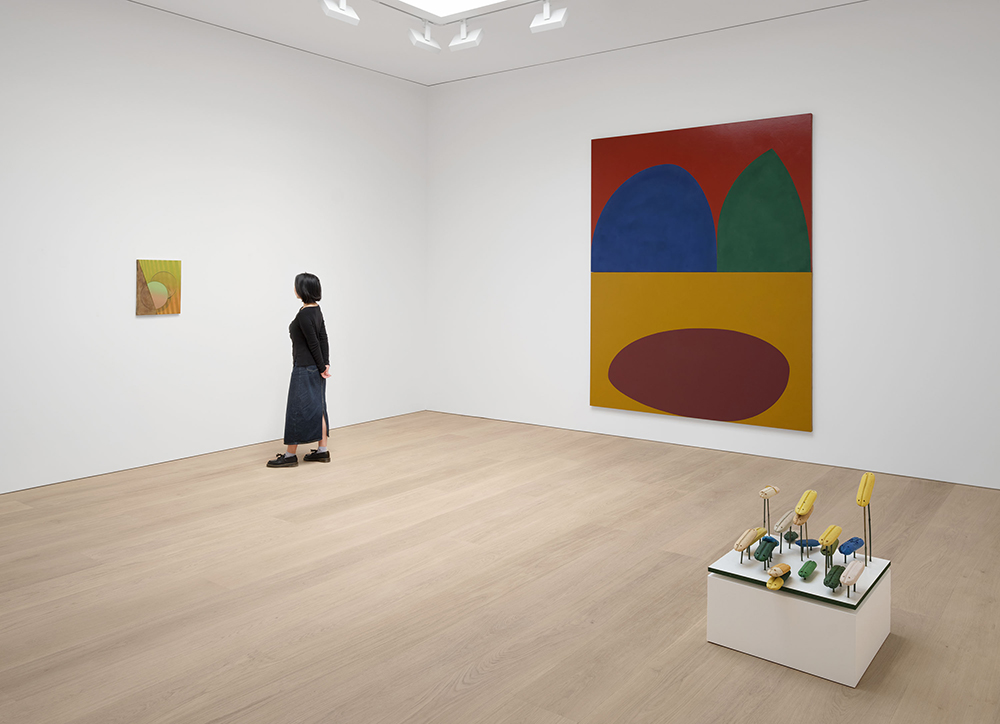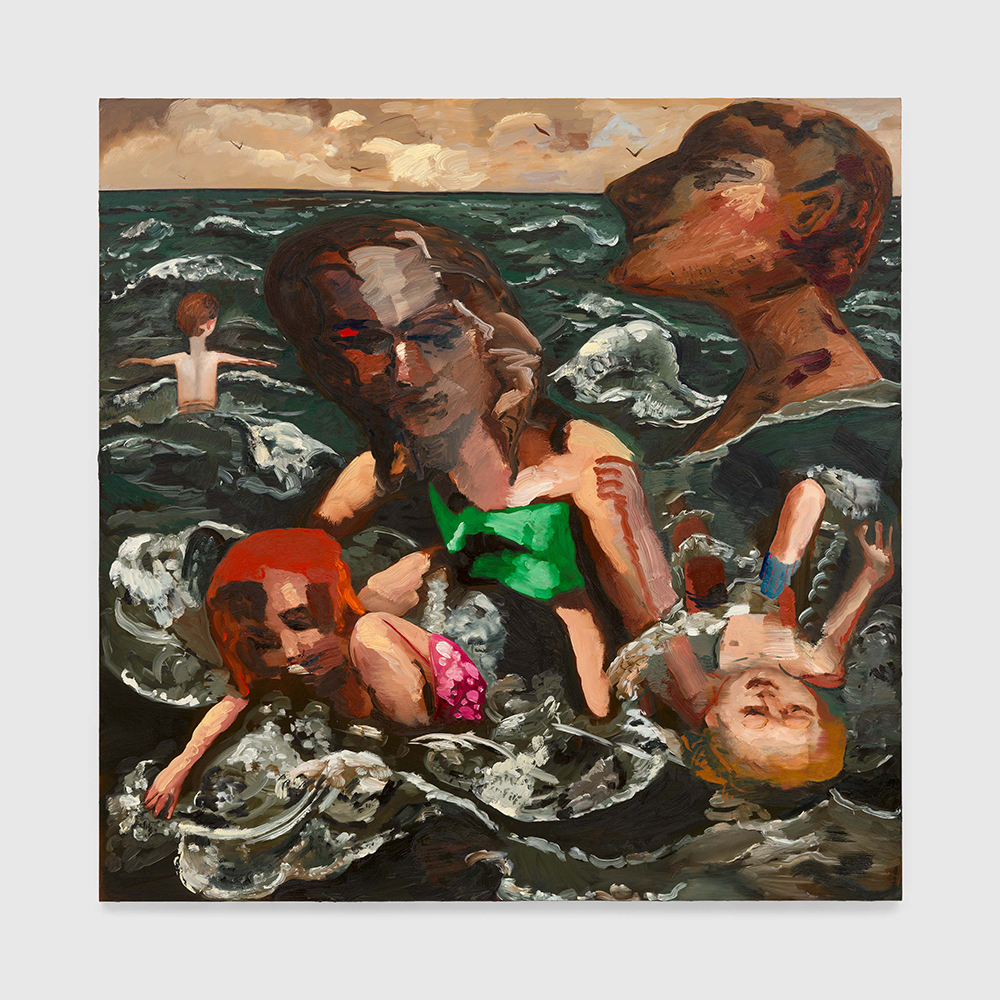On a murky day in May, the art cognoscenti made their way to a preview of gallerist David Zwirner’s newest addition to his burgeoning enclave in Los Angeles. Among the city’s unremitting attempts at reinvention, Melrose Hill—a longstanding, dense and vibrant community—has suddenly become its newest gallery (and culinary) destination. The neighborhood possesses the merits of being a partial Historic Preservation Zone, and its current residents are largely Latino, South Korean and Thai. Its landscape is distinguished by a number of unique 100-year-old buildings—and now by galleries, as well as a ghost kitchen to service food-service delivery customers.
With this one, Zwirner’s complex now totals three buildings, and the new gallery features a 15,000-square-foot Modernist edifice by Selldorf Architects, who proclaim an approach “rooted in the principles of humanism.” The result is a rather restrained facade. But its interior is beautifully realized with voluminous spaces, meticulous finishes and washes of natural light throughout. The noteworthy revelation was this 30-year survey of the gallery’s artists, which read as a “who’s who” of modern and contemporary art history, both Angeleno and international.
Upon entering one encountered Raymond Pettibon’s (No title (Procreation extended to…) (2017). There are other American gems, such as Roy DeCarava’s elegant George Morrow (1956), a silver gelatin print of the jazz bassist. DeCarava was a photographer known for chronicling the daily life of the Harlem community and its musicians. Michaël Borremans’ enigmatic portrait, The Talent (2024), is a vaguely unsettling and ambiguous work carrying an Old Masters sensibility into contemporary discourse. The artist lives and works in Belgium and is probably best known for his controversial 2018 “Fire from the Sun” exhibit the gallery mounted in Hong Kong, which featured blood-splattered, cherub-like toddlers, ostensibly engaged in playful, furtive and possibly violent acts.

“David Zwirner: 30 Years,” installation view. David Zwirner, Los Angeles, May 23–August 3, 2024. Courtesy of David Zwirner.
A catalog from that exhibit was randomly included in an ill-fated Balenciaga media campaign photograph that precipitated all manner of handwringing. Dana Schutz, who has also courted controversy with her painting of Emmett Till in 2017’s Whitney Biennial, was represented here with Family in a Wave (2024), a densely gestural, expressionistic work with a disquieting narrative in which family members are depicted semi-submerged under a massive wave while their children play.
But serenity prevailed with Ruth Asawa’s lovely copper-and-brass hanging sculpture, Untitled (S.765, Hanging Five-Lobed Continuous Form within a Form with a Large Open Collar and Three Interior Spheres) (c. 1952–53). It was a graceful, lissome presence in a sea of disparate styles and mediums that span the gallery’s three decades. The ensemble suggested an impressive trove—a mark of Zwirner’s ongoing, comprehensive commitment to his artists and collectors.
This expansion has been exceptionally rapid, solidifying LA’s reputation as a major art center. And Zwirner isn’t alone, as several New York–based galleries, including James Fuentes, Clearing and Sargent’s Daughters, have joined the westward move. In Melrose Hill, the local response to rumblings of gentrification seems somewhat muted, with residents more curious than anything else. Nevertheless, this micro-economic “train” has already left the station.


